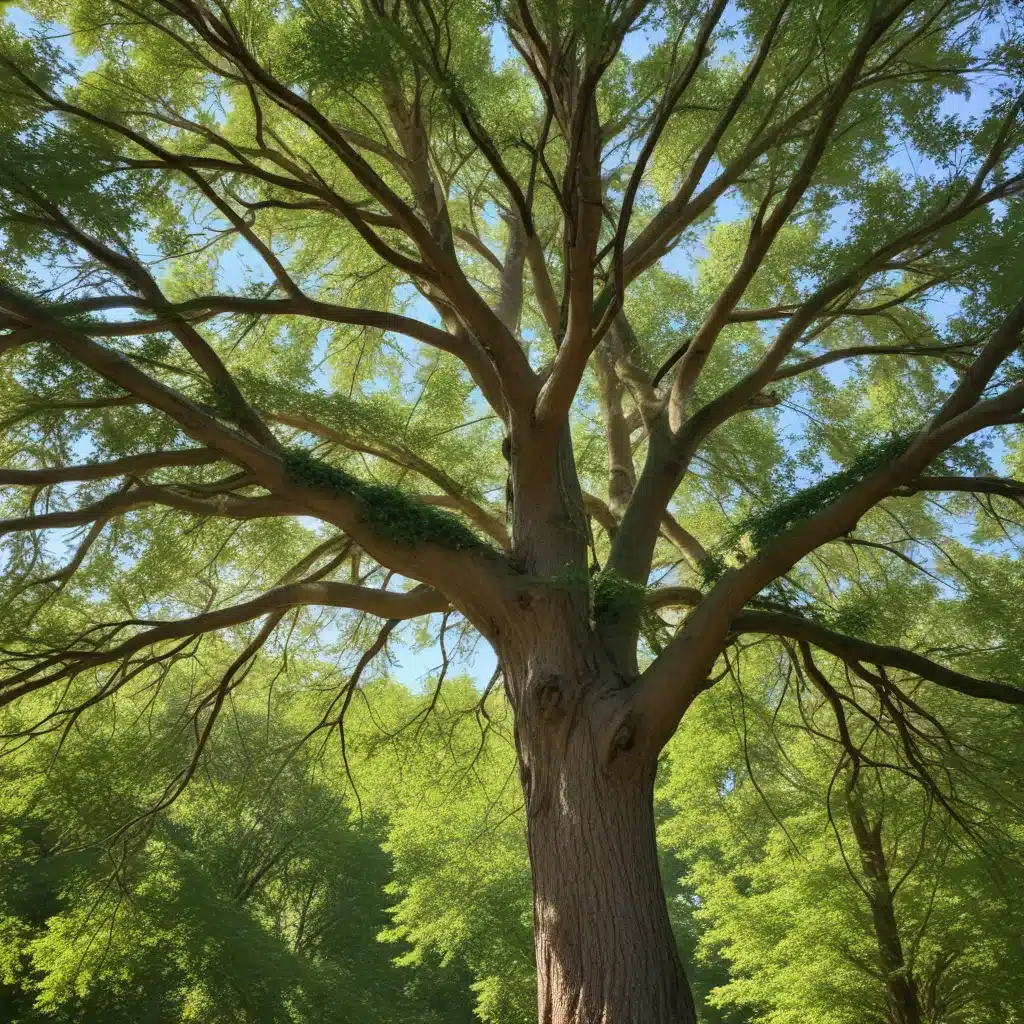
Trees are dynamic living organisms, intricately adapted to the rhythms of the natural world. Phenology, the study of cyclical biological events, reveals the nuanced ebb and flow of a tree’s life cycle. Understanding these seasonal growth patterns is essential for TriCounty Tree Care’s mission to nurture the urban forest’s health and resilience.
Tree Life Cycle and Phenology
A tree’s dormancy during the colder months is a remarkable evolutionary strategy. Shedding leaves, ceasing growth, and redirecting resources underground allow the plant to weather harsh conditions. Yet this apparent quiescence belies a flurry of adaptations – the tree is in fact actively preparing for the demands of the coming year.
As temperatures warm in spring, the tree’s buds swell and break, unfurling a fresh canopy. This lush foliage quickly gets to work, photosynthesizing to fuel the tree’s growth. The root system also expands, absorbing water and nutrients to support aboveground structures. Throughout the growing season, the tree allocates resources to heighten its stature, strengthen its woody framework, and generate reproductive structures like flowers and fruit.
These rhythmic shifts are driven by complex environmental cues. Daylight, precipitation, and soil conditions all play a role in cueing the tree’s physiological transitions. Subtle variations in climate can significantly impact a tree’s phenology, affecting its resilience and capacity to provide ecosystem services.
Pruning and Maintenance
Aligning pruning and other management practices with a tree’s natural cycles is crucial for promoting health and longevity. Dormant-season pruning, typically in late winter, minimizes stress and allows the tree to dedicate its springtime resources to new growth. Removing dead, damaged, or competing branches during this period also reduces the risk of disease and pest infestations.
As the growing season progresses, TriCounty arborists employ more targeted techniques. Summer pruning judiciously thins the canopy, enhancing airflow and light penetration. Fall pruning, on the other hand, focuses on preparing the tree for winter by reducing structural vulnerabilities.
Proper tool selection and safety protocols are equally vital. Deploying the right saws, loppers, and other equipment ensures clean, controlled cuts that facilitate rapid wound closure. Equally important is protecting workers through the use of harnesses, helmets, and other personal protective gear.
Sustainable disposal and recycling of pruned material also merit consideration. Rather than sending woody debris to landfills, TriCounty advocates transforming it into mulch or other beneficial products, closing the loop on urban forest management.
Soil Health and Nutrient Management
A tree’s root zone is its foundation, providing access to the water and minerals essential for growth. Healthy, well-structured soil serves as a living medium, teeming with microorganisms that facilitate nutrient cycling and soil aggregation.
Seasonal adjustments to soil management can optimize these processes. Spring is an ideal time to incorporate organic amendments, such as compost or aged manure, which gradually release nutrients and enhance soil texture. Judicious fertilization during the growing season ensures adequate mineral supplies without promoting excessive vegetative growth.
Monitoring root health is also a year-round priority. Arborists regularly inspect for signs of compaction, disease, or other stressors, and implement decompaction or aeration techniques as needed. Safeguarding the root zone from construction impacts or other disturbances is likewise essential.
Disease and Pest Control
Even the most robust trees are vulnerable to an array of ailments, from fungal pathogens to insect pests. TriCounty’s integrated pest management (IPM) approach blends cultural, mechanical, and targeted chemical controls to address these threats.
Timing is crucial – many tree diseases and pest infestations correlate with specific phenological events. Applying dormant oils or sprays in late winter, for example, can disrupt the overwintering stages of certain insects. Pruning to remove diseased wood is most effective when the tree is dormant and less prone to infection.
Proactive preventative measures are also key. Selecting resilient, site-appropriate tree species and cultivars, diversifying the urban forest, and fostering biological diversity all enhance a tree’s natural defenses. Mulching, proper watering, and other cultural practices further bolster a tree’s vigor and resistance.
Urban Forestry Considerations
Integrating trees into the built environment presents unique challenges that demand a thoughtful, multifaceted approach. Site selection and planting techniques must account for overhead utilities, hardscaping, and other infrastructure conflicts. Careful species selection can minimize these issues, favoring trees with compatible growth habits and resource requirements.
Community engagement is also vital, as urban trees provide myriad benefits that residents directly experience. TriCounty collaborates with local stakeholders to identify priority planting sites, gather feedback on management practices, and foster a shared sense of stewardship.
Ecosystem Services and Benefits
The ecological services that trees provide are wide-ranging and essential. Carbon sequestration, for instance, is a tree’s capacity to capture and store atmospheric carbon dioxide – a crucial function in an era of climate change. Equally vital is a tree’s role in stormwater management, with its canopy intercepting rainfall and its root systems enhancing soil infiltration.
Trees also enrich urban biodiversity, creating habitats that support a diversity of other organisms. Their shading and evaporative cooling effects can even enhance human thermal comfort and reduce energy demands. These multifaceted benefits underscore the need for comprehensive, science-based management of the urban forest.
By aligning our practices with the natural rhythms of the trees in our care, the arborists at TriCounty Tree Care are poised to maximize the environmental, economic, and social value of the urban forest. Through proactive, season-specific interventions and a deep understanding of tree biology, we cultivate resilient, thriving trees that serve as cornerstones of sustainable, livable communities.


